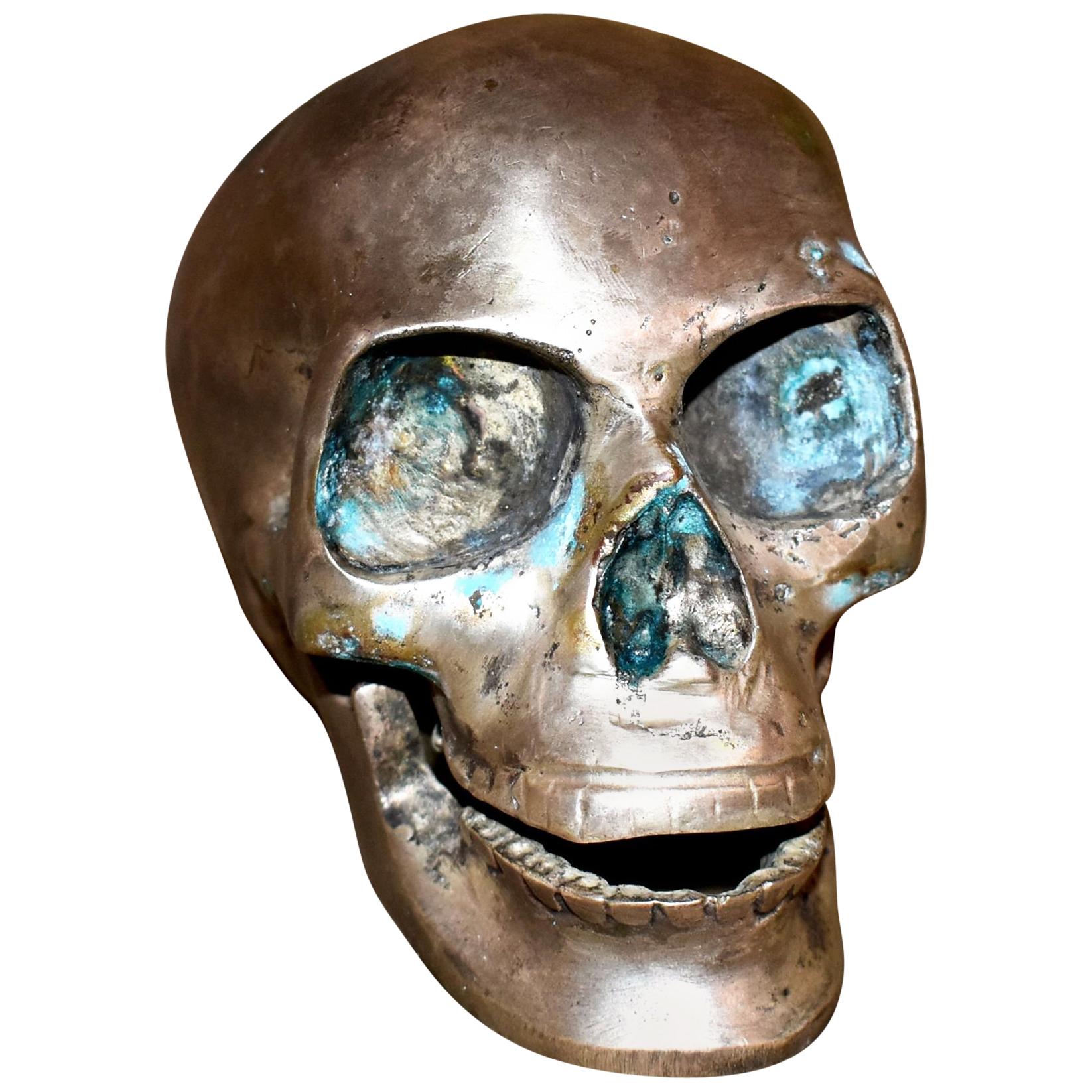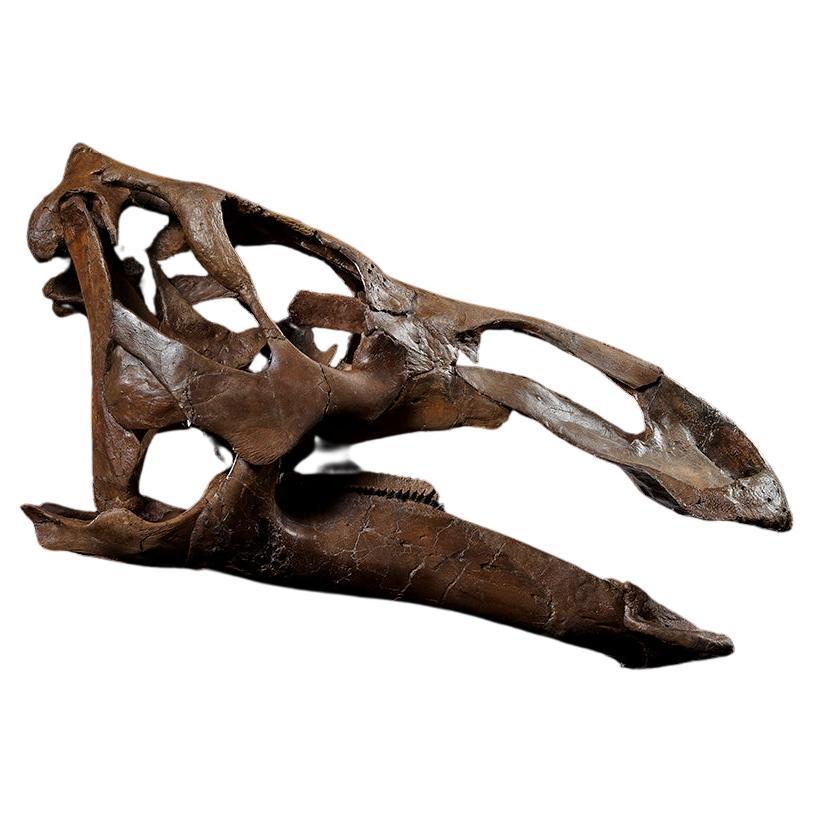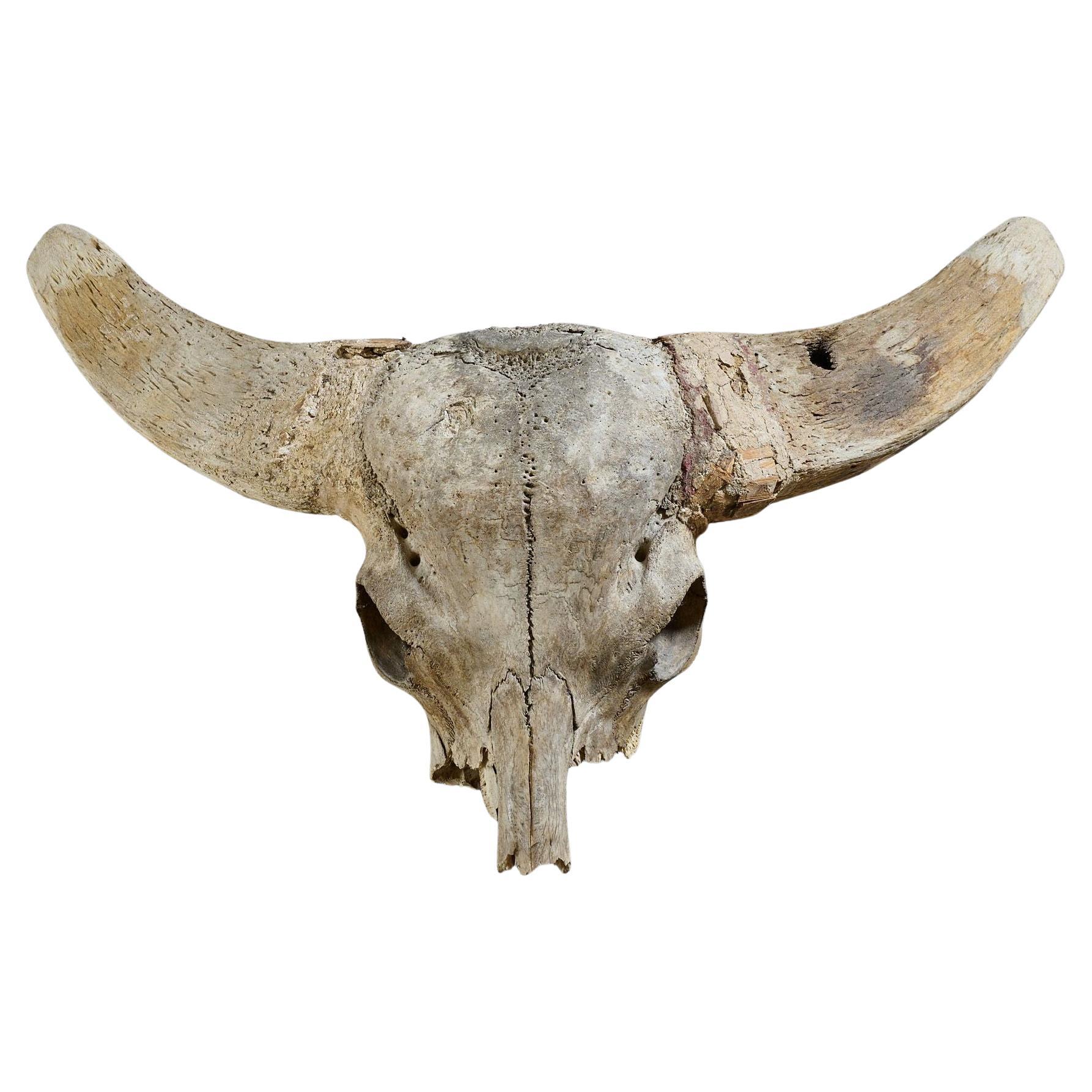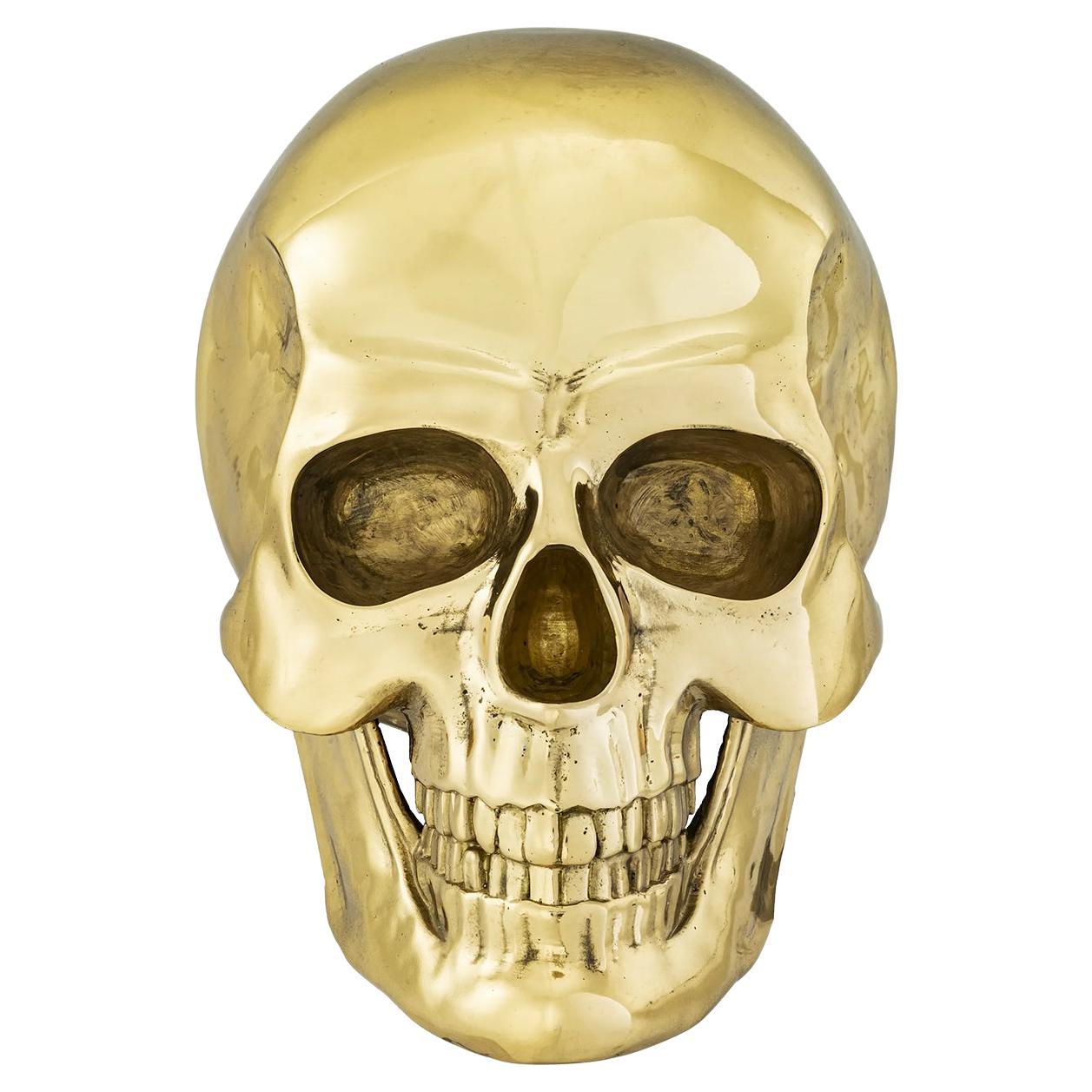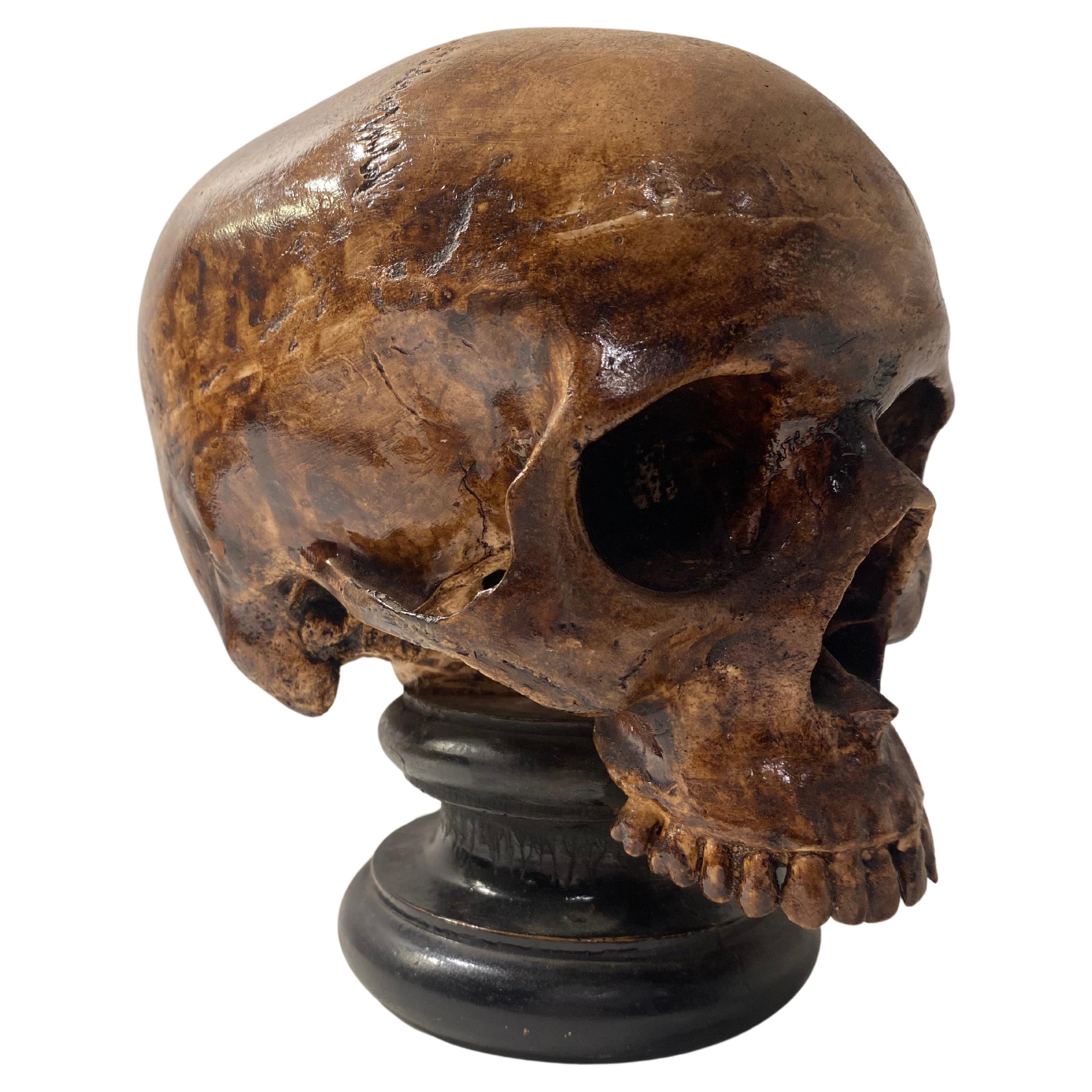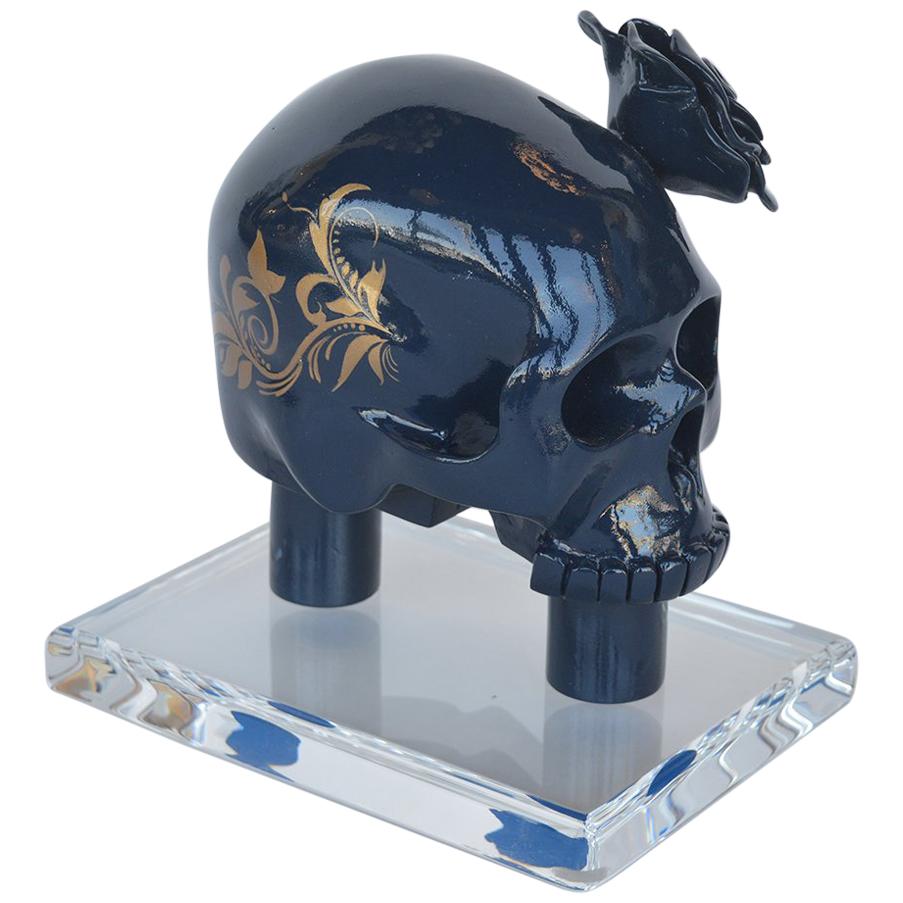Items Similar to Half Triceratops Skull
Video Loading
Want more images or videos?
Request additional images or videos from the seller
1 of 6
Half Triceratops Skull
About the Item
A partial skull of a fully grown Triceratops prorsus from the Maastrichtian, late Cretaceous period (68-65 million years ago). It is in three parts, and has an impressively sized nasal and arching brow horn (90.17 cm long) and frill. The impressive dimensions of this specimen dramatically evokes the overwhelming size and presence of the prehistoric beast.
The triceratops roamed the plains of what is now North America around 68-66 million years ago. It was the most numerous of the horned cretaceous dinosaurs as well as the largest ceratopsian, and one of the last to become extinct approximately 66 million years ago.
One of the most famous species of dinosaur, its flaring bony frill, pointed beak and three-horned head make the triceratops instantly recognisable. Today two species of triceratops are accepted: the earlier T. horridus, which is characterised by a smaller nose horn and long beak, and the later T. prorsus, with its longer nose horn and shorter beak. Adult triceratops weighed around 7 to 12 tonnes, roughly the equivalent of 7 small cars, and larger than a full-grown African elephant.
A herbivore, the triceratops grazed on the plentiful low-lying plants of its lush habitat. Its head was up to one-third the length of its body and is the largest known skull of any land animal. Its menacing horns were largely for protection, as triceratops lived contemporaneously with the Tyrannosaurus rex and, as the largest herbivore, most likely made up the majority of its prey. The flaring frill was ostensibly also for protection although studies have shown it may have originally been brightly coloured, suggesting possible functions ranging from mating rituals, identification purposes, and even regulating body temperature. Many skulls found have been damaged in what appear to be predator attacks, and examples have even been found with tyrannosaur tooth marks and new growth after breakage.
Provenance
Discovered on private land, Garfield County, Montana, USA, 2017.
ALR: S00236272, with IADAA Certificate, this item has been checked against the Interpol database.
- Dimensions:Height: 97.8 in (248.42 cm)Width: 59 in (149.86 cm)Depth: 218 in (553.72 cm)
- Materials and Techniques:
- Place of Origin:
- Period:
- Date of Manufacture:Maastrichtian, Late Cretaceous Period (circa 67 million years ago)
- Condition:Wear consistent with age and use. Sculptural fragment, in excellent condition.
- Seller Location:London, GB
- Reference Number:
About the Seller
5.0
Vetted Seller
These experienced sellers undergo a comprehensive evaluation by our team of in-house experts.
Established in 1910
1stDibs seller since 2020
- ShippingRetrieving quote...Ships From: London, United Kingdom
- Return PolicyThis item cannot be returned.
More From This SellerView All
- Edmontosaurus SkullLocated in London, GBAn impressive skull of an Edmontosaurus, a large herbivorous dinosaur that lived during the Late Cretaceous period, 68-66 million years ago. The three rows of sixty or more teeth on either side of the jaw, known as the ‘dental battery’, mark the Edmontosaurus as part of the Hadrosauridae, or duckbill family of dinosaurs. It belongs to the flat-skulled, or solid-crested, Hadrosaurinae, which replaced the older hollow-crested hadrosaurs. Edmontosaurus was one of the last non-avian dinosaurs to ever exist, living shortly before the Cretaceous-Paleogene extinction event. The Edmontosaurus was named in 1917 by Lawrence Lambe, after a partial specimen from Edmonton in Alberta, Canada. The existence of large Edmontosaur bone beds...Category
Antique 15th Century and Earlier American Natural Specimens
MaterialsBone
- Large GogottteLocated in London, GBA rare Gogotte formation – a millions-of-years old naturally shaped sandstone concretion, consisting of tiny quartz fragments held together by cal...Category
Antique 15th Century and Earlier French Natural Specimens
MaterialsQuartz
- South Arabian Head of a WomanLocated in London, GBA female head finely carved from evenly-coloured cream alabaster. The face features a strong chin, high rounded cheekbones, and large elliptical eyes deeply inset for inlays. The remains of the nose indicate that it was long, thin, and roughly triangular in form. A small, round mouth sits just below the nose. Deeply incised eyebrows follow the shape of the eyes, which are framed by unusual grooved canthi on either side, possibly to represent cosmetic eye paint. The supraorbital margins above the eyes are deeply carved, while the carving below the eyes is more subtle, smoothing the sockets into the rounded cheeks. The ears are formed from two arcs and a central sphere, and both lobes are pierced for earrings. The long hair frames the face below the ears, and is carved to create a rougher texture. There is a stock sticker on the back of the neck. A fragment of the right shoulder remains. This suggests that the head was part of a larger sculpture, possibly a full figure (though this seems unlikely due to its relatively large scale) or, more likely, a bust. This head is stylistically aligned with those found at Timna, the capital of the ancient Yemeni kingdom of Qataban, which existed from the 1st millennium BC until the late 1st or 2nd centuries AD. Timna served as an important hub of the Incense Route, the camel caravan that transported incense from Arabia and India to ports on the Mediterranean Sea. Roman author and philosopher Pliny the Elder (23/24-79 AD) described Timna as a busy city with around 65 temples. Excavations in 1950 and 1951 by Wendell Phillips...Category
Antique 15th Century and Earlier European Antiquities
MaterialsAlabaster
- Bowl with Kufic InscriptionLocated in London, GBGlazed ceramic bowl with a convex wall and everted rim. With a cobalt blue inscription in the centre which reads, “baraka li-sahibihi” (blessing to its owner). Ceramics such as t...Category
Antique 15th Century and Earlier Antiquities
MaterialsCeramic
- Epitaph for Quirinia FeliciaLocated in London, GBA rectangular marble slab carved with the Latin inscription ‘QVIRINIAE C(retr.) L / FELICLAE / OLLAM DAT / C VALERIVS PYLODAMVS’, which translates as ‘Gaius Valerius Pylodamus gave t...Category
Antique 15th Century and Earlier European Classical Roman Antiquities
MaterialsBronze
- Anglo-Saxon Hanging BowlLocated in London, GBA very rare and near-complete copper-alloy hanging bowl and associated fittings. Crafted from a single sheet of bronze, the body of the bowl is curved, with a slightly recessed lip. ...Category
Antique 15th Century and Earlier English Antiquities
MaterialsBronze
You May Also Like
- Skull SculptureLocated in Cathedral City, CANickel-plated over bronze skull sculpture.Category
20th Century American Mid-Century Modern Mounted Objects
MaterialsBrass, Nickel
- Water Buffalo SkullLocated in Chicago, ILVery old water buffalo skull with cool wood repairs.Category
Antique Early 1900s Central African Animal Sculptures
MaterialsBone
- Brass Skull SculptureLocated in Paris, FRSculpture brass skull all in solid. brass in polished finish.Category
21st Century and Contemporary Chinese Figurative Sculptures
MaterialsBrass
- Exceptional Terracotta SkullLocated in Schellebelle, BEExceptional French sculpture of a human skull, warm Brown colored Terracotta with a good,old patina, mounted on a black base, nice and refined sculpting with an eye for detail, very ...Category
Vintage 1950s Mounted Objects
MaterialsTerracotta
- Blue Resin SkullLocated in Los Angeles, CADecorative resin skull on acrylic base.Category
2010s Mexican Figurative Sculptures
MaterialsResin
- White Resin SkullLocated in Los Angeles, CADecorative white resin skull on acrylic base.Category
2010s Mexican Figurative Sculptures
MaterialsPlastic
Recently Viewed
View AllMore Ways To Browse
Mineral Slice
African Malachite
Green Quartz Chinese
Fish Feet
Mammoth Tooth
German Fruit Bowl
Kitchen Island Open
Old Oak Dining Chairs
Floor Lamp Metal Disc
Antique Karabagh Runner
Spain Brass Dining Chairs
Vintage French Wood Benches
Damascene Furniture
Empire State Rug
Triform Table
Chair By Dux
Glass Disc Pendants Pair
Wood Bench With Stone
